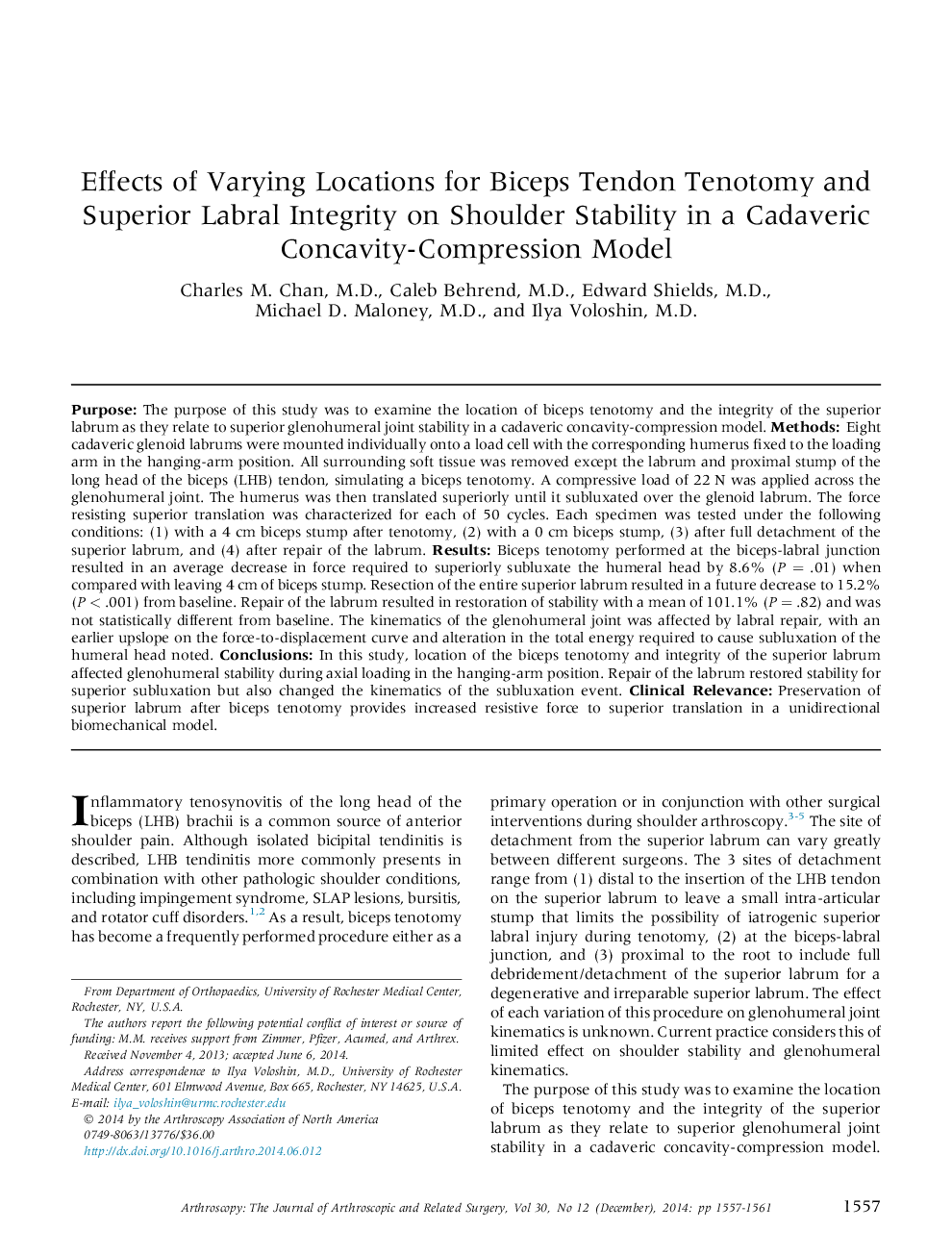| Article ID | Journal | Published Year | Pages | File Type |
|---|---|---|---|---|
| 4042390 | Arthroscopy: The Journal of Arthroscopic & Related Surgery | 2014 | 5 Pages |
PurposeThe purpose of this study was to examine the location of biceps tenotomy and the integrity of the superior labrum as they relate to superior glenohumeral joint stability in a cadaveric concavity-compression model.MethodsEight cadaveric glenoid labrums were mounted individually onto a load cell with the corresponding humerus fixed to the loading arm in the hanging-arm position. All surrounding soft tissue was removed except the labrum and proximal stump of the long head of the biceps (LHB) tendon, simulating a biceps tenotomy. A compressive load of 22 N was applied across the glenohumeral joint. The humerus was then translated superiorly until it subluxated over the glenoid labrum. The force resisting superior translation was characterized for each of 50 cycles. Each specimen was tested under the following conditions: (1) with a 4 cm biceps stump after tenotomy, (2) with a 0 cm biceps stump, (3) after full detachment of the superior labrum, and (4) after repair of the labrum.ResultsBiceps tenotomy performed at the biceps-labral junction resulted in an average decrease in force required to superiorly subluxate the humeral head by 8.6% (P = .01) when compared with leaving 4 cm of biceps stump. Resection of the entire superior labrum resulted in a future decrease to 15.2% (P < .001) from baseline. Repair of the labrum resulted in restoration of stability with a mean of 101.1% (P = .82) and was not statistically different from baseline. The kinematics of the glenohumeral joint was affected by labral repair, with an earlier upslope on the force-to-displacement curve and alteration in the total energy required to cause subluxation of the humeral head noted.ConclusionsIn this study, location of the biceps tenotomy and integrity of the superior labrum affected glenohumeral stability during axial loading in the hanging-arm position. Repair of the labrum restored stability for superior subluxation but also changed the kinematics of the subluxation event.Clinical RelevancePreservation of superior labrum after biceps tenotomy provides increased resistive force to superior translation in a unidirectional biomechanical model.
